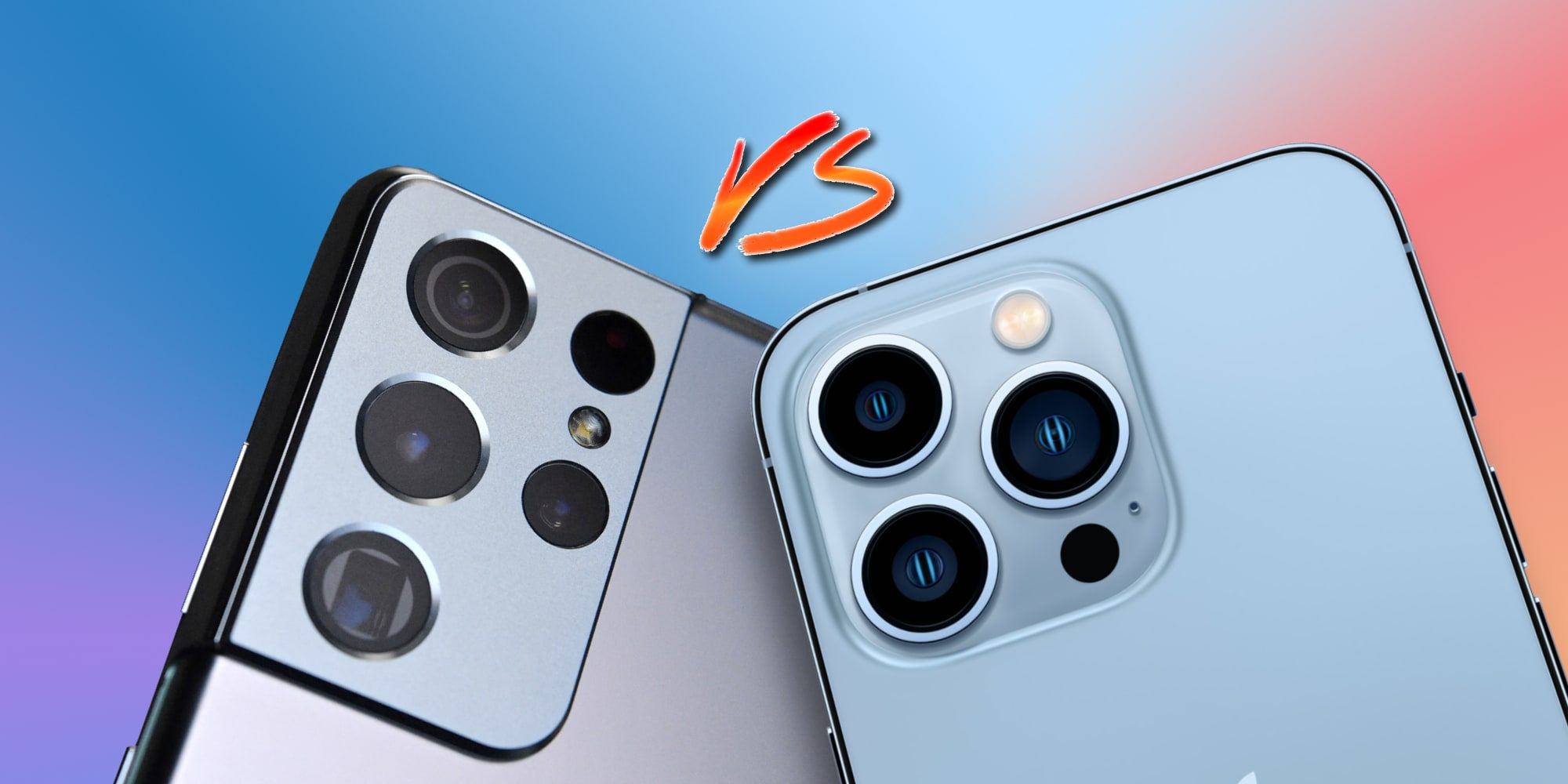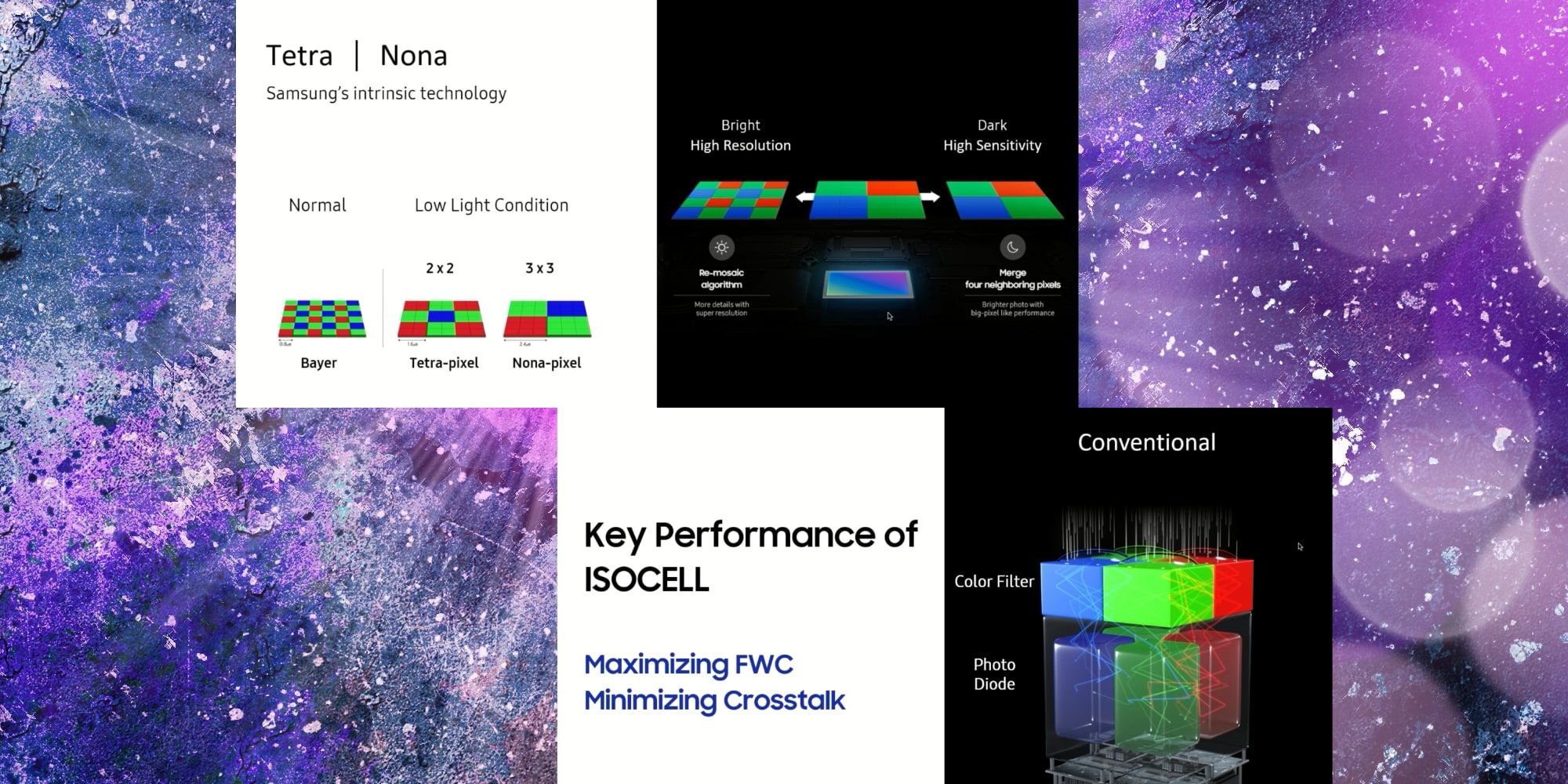Apple's new iPhone 13 Pro Max is among the best smartphones for photography, better even than the very impressive Samsung Galaxy S21 Ultra. The Apple and Samsung rivalry spans many years, pushing one another to ever greater heights, Apple choosing much higher quality cameras, while Samsung has toned down its processing to produce more balanced photos. The hardware and software of these two advanced camera systems will make it clear that Apple has a notable lead over Samsung for high-quality photography in various conditions. Apple lets in much more light, something that's critical to capturing the best quality possible and producing the most beautiful images.
The Galaxy S21 Ultra is a top-rated smartphone and Samsung refined the quality of the photos that can be captured with the main 108-megapixel image sensor, marking big improvements over the previous generation. Overall, image quality is very good and it has one of the best smartphone zoom capabilities available, with two telephoto cameras catering to 3 and 10 times. The headline feature of 100 times digital zoom is somewhat ridiculous. Even backing off to 30 times zoom, photos will look harsh and edgy and might not be worth saving. The feature has its place and is quite handy when it isn't possible to simply move closer to the subject, and when a dedicated zoom camera isn't available. Optical image stabilization, focus pixels, and laser autofocus help to keep photos sharp.
Apple's new iPhone 13 Pro Max is a step up from the already excellent iPhone 12 Pro Max. Every camera was improved, most notably the ultra wide-angle which now has autofocus and a much wider f/1.8 aperture. Compared to the Galaxy S21 Ultra's f/2.2, this means the iPhone brings in more light. The same is true of the main camera, with Apple featuring an incredibly fast f/1.5 lens compared to Samsung's f/1.8. These sound like small changes but they can make a huge difference. While night mode can use computational photography to make up the difference in some cases, it can result in motion blur if there is any movement in the scene. That's why photographers pay thousands of dollars more to get faster lenses for their DSLR cameras. A wider aperture provides sharper photos with better detail in dark areas before any image processing takes place. The iPhone 13 Pro Max has an improved telephoto that offers a 3 times zoom, up from the 2.5 of last year, but that hardly seems worth mentioning in the presence of Samsung's dual 3 and 10 times zoom cameras. Apple uses sensor-shift stabilization, which is better than moving the lens as Samsung does. The iPhone 13 Pro Max has focus pixels, like Samsung, but can draw on LiDAR as a backup to measure distance quickly and accurately in difficult conditions. The Galaxy S21 Ultra's laser autofocus is less reliable.
Computational Smartphone Photography
Automatic image processing plays a major role in smartphone photography and can dramatically improve photos in some conditions. For photography enthusiasts, it used to be quite common to immediately switch to RAW mode so the image was left untouched and could be fine-tuned manually. With the advances of modern technology, high-dynamic-range images, night mode, pixel-binning, and super-resolution zoom make the software much more useful. Ideally, it would be possible to see the default processing as a layer over the RAW file, which is exactly what Apple's ProRAW format provides. So far, Samsung doesn't have an equivalent option.
Both the iPhone 13 Pro Max and Galaxy S21 Ultra offer portrait blur and do a fairly good job. While this technology is far from reliable, it can produce some impressive simulations of bokeh. When it comes to controls, Apple opts for simplicity, allowing exposure adjustments and focus locking, but nothing in the way of manual controls. There are some excellent apps available for a few dollars, so this isn't a big issue. However, Samsung includes a Pro mode that provides manual controls for adjusting ISO, aperture, shutter speed, color balance, and focus, just like a DSLR, and the company deserves credit for that.
The Samsung Galaxy S21 Ultra is a great smartphone that has fantastic cameras and incredible zoom capabilities. For bird photographers that don't want to use a DSLR or a compact super-zoom camera, it might be the better choice. Most other users rarely have a need for such a long zoom. While fun, it simply won't see much use. The iPhone 13 Pro Max has the faster lenses for its wide and ultra-wide cameras that are used most often and LiDAR for sharp focus. Apple's ProRAW lets the user refine an image that has been processed with computational photography algorithms without loss of quality. Apple's iPhone 13 Pro Max is the better smartphone overall for high-quality photography, with sharp, bright images that are less likely to contain motion blur.


